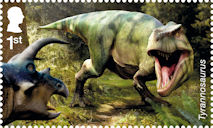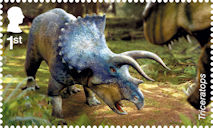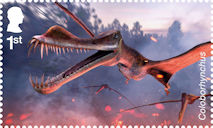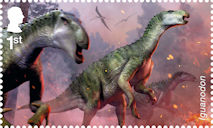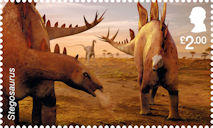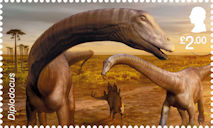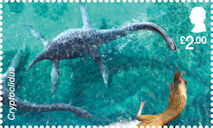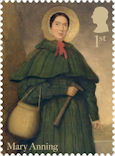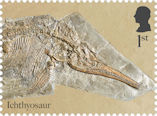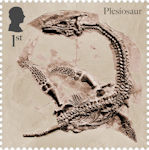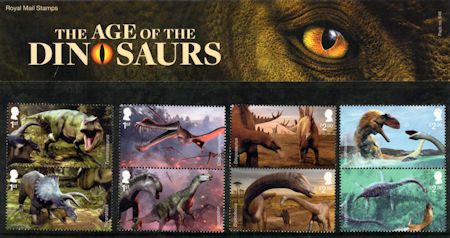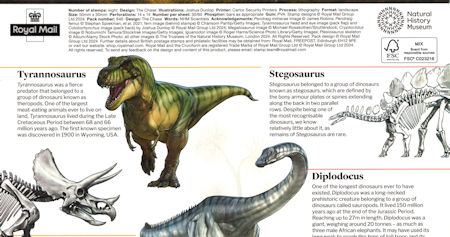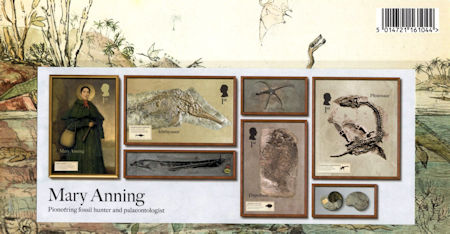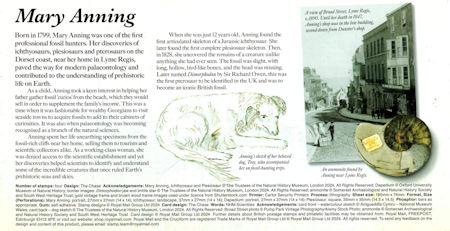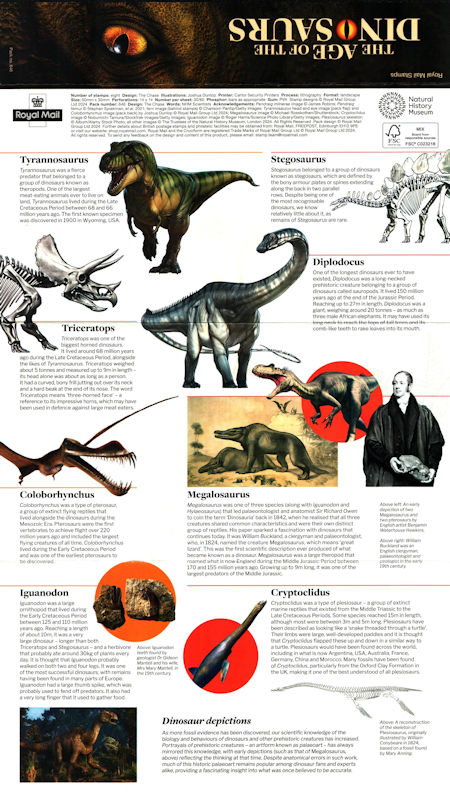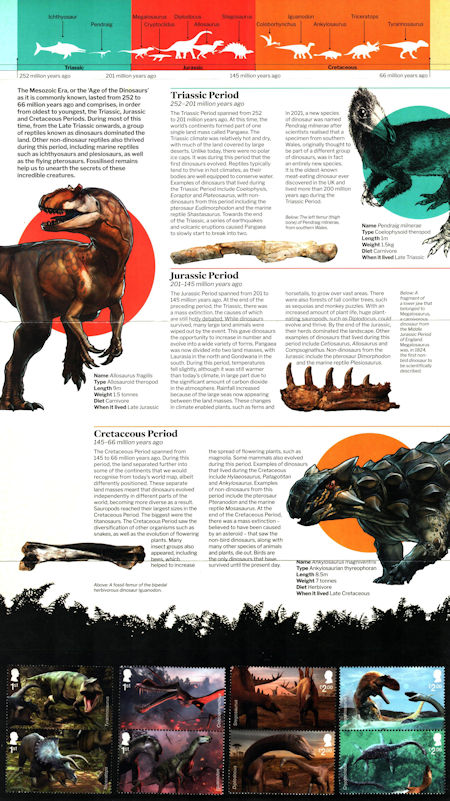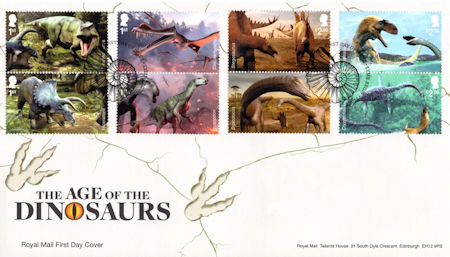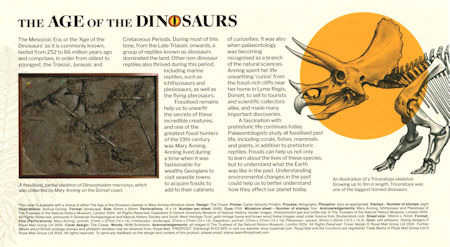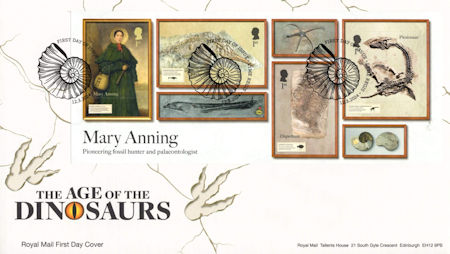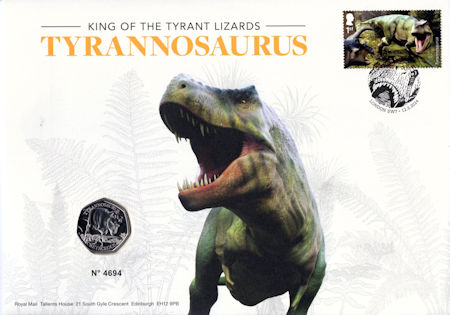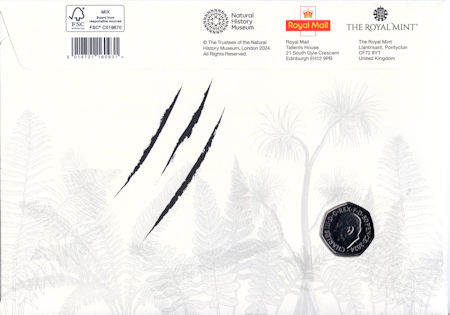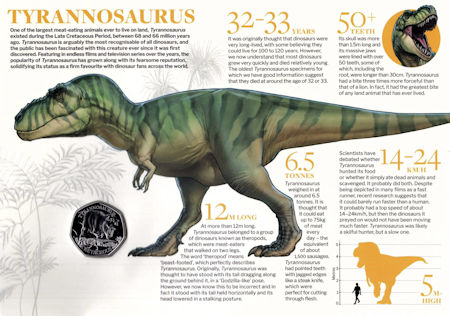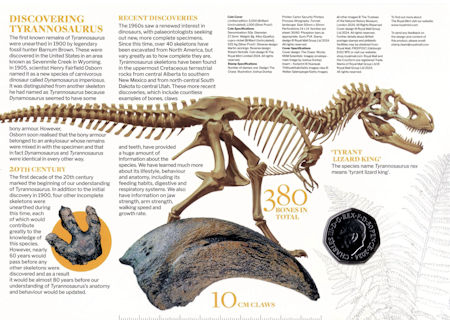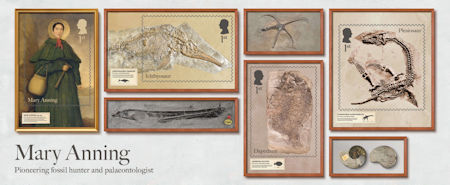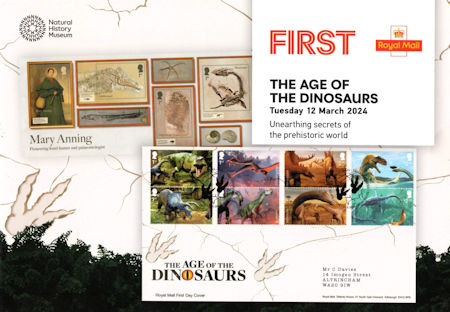The Age of the Dinosaurs
 The Age of the Dinosaurs at Royal Mail
The Age of the Dinosaurs at Royal Mail
Eight new, stunning stamps that include dinosaurs and other prehistoric reptiles from the Jurassic and Cretaceous eras. The new designs, by Exeter based, digital concept illustrator, Joshua Dunlop, combine scientific accuracy, provided by the Natural History Museum’s palaeontology department, with artistic brilliance in a captivating homage to the wonders of palaeontology.
2024 (March 12 2024)
Commemorative
Designed by The Chase
Size 50mm (h) x 30mm (v)
Printed by Cartor Security Print
Print Process Lithography
Perforations 14 x 14
Gum PVA
Stamps
Tyrannosaurus
1stTyrannosaurus was a fierce predator that belonged to a group of dinosaurs known as theropods. One of the largest meat-eating animals ever to live on land, Tyrannosaurus lived during the Late Cretaceous period between 68 and 66 million years ago. The first known specimen was discovered in 1900 in Wyoming, USA.
Triceratops
1stTriceratops was one of the biggest horned dinosaurs. It lived around 68 million years ago during the Late Cretaceous period, alongside the likes of Tyrannosaurus. Triceratops weighed about 5 tonnes and measured up to 9m in length – its head alone was about as long as a person. It had a curved, bony frill jutting out over its neck and a hard beak at the end of its nose. The word Triceratops means ‘three-horned face’ – a reference to its impressive horns, which may have been used in defence against large meat eaters
Coloborhynchus
1stColoborhynchus was a type of pterosaur, a group of extinct flying reptiles that lived alongside the dinosaurs during the Mesozoic Era. Pterosaurs were the first vertebrates to achieve flight over 220 million years ago and included the largest flying creatures of all time. Coloborhynchus lived during the Early Cretaceous period and was one of the earliest pterosaurs to be discovered.
Iguanodon
1stIguanodon was a large ornithopod that lived during the Early Cretaceous period between 125 and 110 million years ago. Reaching a length of about 10m, it was a very large dinosaur – longer than both Triceratops and Stegosaurus – and a herbivore that probably ate around 30kg of plants every day. It is thought that Iguanodon probably walked on both two and four legs. It was one of the most successful dinosaurs, with remains having been found in many parts of Europe. Iguanodon had a large thumb spike, which was probably used to fend off predators. It also had a very long finger that it used to gather food.
Stegosaurus
£2.00Stegosaurus belongs to a group of dinosaurs known as stegosaurs, which are defined by the bony armour plates or spines that extend along the back in two parallel rows. Despite being one of the most recognisable dinosaurs, we know relatively little about it, as remains of Stegosaurus are rare.
Diplodocus
£2.00One of the longest dinosaurs ever to have existed, Diplodocus was a long-necked prehistoric creature belonging to a group of dinosaurs called sauropods. It lived 150 million years ago at the end of the Jurassic Period. Reaching up to 27m in length, Diplodocus was a giant, weighing around 20 tonnes – as much as three male African elephants. It may have used its long neck to reach the tops of tall trees and its comb-like teeth to rake leaves into its mouth.
Megalosaurus
£2.00Megalosaurus was one of three species (along with Iguanodon and Hylaeosaurus) that led palaeontologist and anatomist Sir Richard Owen to coin the term ‘Dinosauria’ back in 1842, when he realised that all three creatures shared common characteristics and were their own distinct group of reptiles. His paper sparked a fascination with dinosaurs that continues today. It was William Buckland, a clergyman and palaeontologist, who, in 1824, named the creature Megalosaurus, which means ‘great lizard’. This was the first scientific description ever produced of what became known as a dinosaur. Megalosaurus was a large theropod that roamed what is now England during the Middle Jurassic period between 170 and 155 million years ago. Growing up to 9m long, it was one of the largest predators of the Middle Jurassic.
Cryptoclidus
£2.00Cryptoclidus was a type of plesiosaur – a group of extinct marine reptiles that existed from the Middle Triassic to the Late Cretaceous periods. Some species reached 15m in length, although most were between 3m and 5m long. Plesiosaurs have been described as looking like a ‘snake threaded through a turtle’. Their limbs were large, well-developed paddles and it is thought that Cryptoclidus flapped these up and down in a similar way to a turtle. Plesiosaurs would have been found across the world, including in what is now Argentina, USA, Australia, France, Germany, China and Morocco. Many fossils have been found of Cryptoclidus, particularly from the Oxford Clay Formation in the UK, making it one of the best understood of all plesiosaurs
Publicity - First
PHQ Cards
RM Code AQ350














